Welcome to the land of dreamy dreams and harsh realities that is New Orleans. Books and films have given readers a longtime familiarity with its great neighborhoods and its distinctive culture, which play out on city streets – especially in the elaborate costumes of Mardi Gras. Most New Orleanians, old line or recently arrived, know the drama of Stanley and Stella, the elegance of the Vampire Lestat and his friends, the aromatic hot dog cart of Ignatius Reilly, and the determined search of Binx Bolling. The streets beckon the flaneur in all of us. Writers like Richard Ford and Barry Gifford have drifted in and out of New Orleans over the years; natives Walter Isaacson, Michael Lewis and Anne Rice have become fixtures on the bestseller lists. And the literary heritage of one of the country’s great cities grows with new arrivals every year.
Tennessee Williams’ A Streetcar Named Desire has made that green trolley the city’s iconic visual image. A new biography, Tennessee Williams: Mad Pilgrimage of the Flesh, by theater critic John Lahr, illuminates the playwright’s life as never before. Every March, the city comes alive with literary energy as the Tennessee Williams/New Orleans literary festival takes place. Walking tours explore important sites in the playwright’s time here, and you can still ask for Tennessee’s table at Galatoire’s restaurant on Bourbon St. That triangle of Stanley, Stella and Blanche played out so much sexual tension and frustrated desire – it’s no wonder that New Orleans is a locus for all kinds of sensual fantasy and permissiveness! Stella seems to linger on every French Quarter balcony.
A gorgeous French Quarter byway is Pirate’s Alley off Jackson Square, where Faulkner House Books honours its former resident, William Faulkner. He came to the city to spend time with Sherwood Anderson, then in residence in Jackson Square’s Pontalba Buildings. Faulkner was only here for a brief period, but he found inspiration for Soldier’s Pay, Mosquitoes and the wicked satire Sherwood Anderson and Other Famous Creoles as the city worked its transformative magic on the young writer.
French Quarter vagaries also feature in John Kennedy Toole’s rollicking comedy A Confederacy of Dunces, that tale of Ignatius J Reilly, a would-be medievalist and philosopher forced to tend a Paradise Vendor hot dog cart to earn his daily bread. Once you’ve read it, you’ll never look at those vendors the same way again. Speaking of which, Jerry Strahan – manager of a cart called Lucky Dogs – looked at the real men behind the carts in Managing Ignatius: The Lunacy of Lucky Dogs and Life in the Quarter.
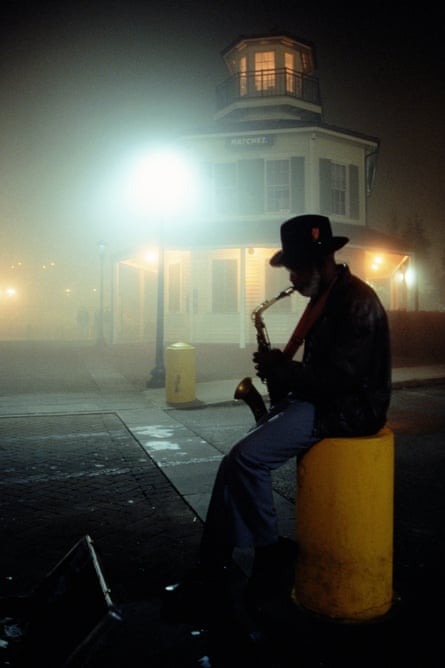
Fans of Walker Percy’s The Moviegoer stroll the shopping mecca of Royal Street, where Binx had his sighting of William Holden – although these days, visitors are more likely to run into TV actors like Jessica Lange from American Horror Story or Scott Bakula filming NCIS New Orleans. Binx’s search for meaning struck a chord with an entire generation in one of the most frequently taught of New Orleans’s classic works, which depicts the city from the Carrollton neighborhood to the Garden District to peaceful Gentilly.
Take the streetcar up to the Garden District and you’ll find the mansion at First and Chestnut, one of Anne Rice’s most famous residences. There’s often a crowd outside this home of the Mayfairs, the family of witches at the heart of The Witching Hour and subsequent works. A few blocks away you’ll find the cemetery on Sixth street where the Vampire Lestat took his long sleep. Rice’s Interview with the Vampire, one of the most sensual of New Orleans novels, has made the city a Halloween destination. Her supernatural beings inhabit a shadowy, beautiful city that seems to shimmer beneath the real landscape.
However, not all streets in New Orleans are elegant or glamorous – mean and dangerous streets abound. James Lee Burke is the grand master of Louisiana crime fiction, and he writes about the post-Katrina city in the story collection Jesus Out to Sea, and The Tin Roof Blowdown, featuring his well-known protagonist Dave Robicheaux. Anyone who’s ever spent much time in the Quarter will sympathise with Dave’s white-knuckled struggle for sobriety and his cynical view of the city.
The recent anthology New Orleans Noir, edited by Julie Smith, surveys the field, with a selection of pre- and post-Katrina stories by a variety of writers. Poverty, lack of opportunity and corruption – along with the vultures that descended on the wide-open city after the storm – provide considerable material for those who wish to explore the city’s dark side.
Images of the city’s flooded streets and homes from the summer of 2005 are still painful. Few have captured the Katrina experience as well as Times-Picayune columnist Chris Rose in his collection of columns, 1 Dead in Attic. John Barry’s bestseller, Rising Tide: The Great Mississippi Flood of 1927 and How It Changed America, set the stage for that disaster with its history of flood control efforts. In addition, Tom Piazza’s passionate manifesto, Why New Orleans Matters, rose to the city’s defence in the autumn of 2006.
Now, read. Come see for yourself. This beautiful city survives still, somewhere between lingering literary memory and undeniable present fact.
- Susan Larson is the author of The Booklover’s Guide to New Orleans, hosts The Reading Life radio programme on New Orleans Public Radio and was book editor for the The New Orleans Times-Picayune newspaper from 1988 to 2009
- The Tennessee Williams New Orleans Literary Festival runs until 29 March. Find more information here. From Larson: “A highlight is the Stanley and Stella Shouting contest in Jackson Square. T-shirt and slip-clad contestants vie for their objects of desire, and Stella even has some ardent female suitors! It’s literature come to life.”
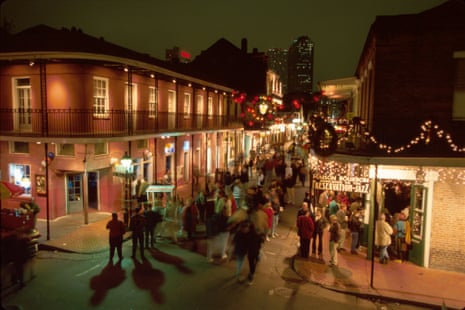

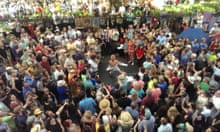
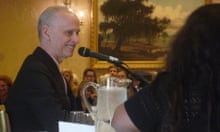
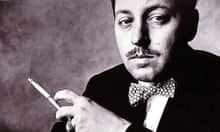
Comments (…)
Sign in or create your Guardian account to join the discussion